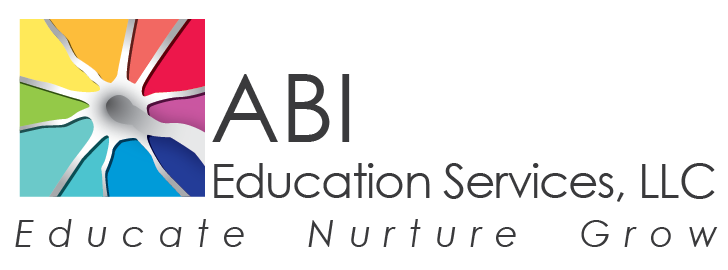Changing Educational Systems
Students with traumatic brain injury in school
Students returning to school with traumatic brain injuries may have a variety of physical, cognitive, behavioral, social and emotional challenges. Recovery of function is typically enhanced through exposure to enriched environments like the education provided at schools. Just as schools promote learning, recovery after a brain injury is a re-learning process. This is why it is important to provide students with brain injuries access to appropriate supports and services by educators within the school system.
Still under the radar screen
Unfortunately, brain injury has slipped under our educators’ radar. It has often gone unnoticed due to underreporting and/or misidentification. However, more and more children, adolescents, and young adults are surviving their injuries as medical technology advances. However, students with brain injury who return to school and require special accommodations, supports, and services are still too often at an unfair disadvantage because educators have little knowledge or training about teaching them. Without the necessary educational supports and programs, students with brain injuries are at greater risk for lower academic performance, failing grades, and dropping out prior to high school graduation. Important steps need to be taken in order to change our educational system across the nation if we are to meet the challenge of educating students with brain injuries.
It’s a messy problem
Currently, there are 5.3 million Americans living with the effects of a long-term disability as a result of brain injury with 1.5 million Americans sustaining a TBI annually. But just ask any educator (primary, secondary, or post secondary) and they will tell you that they do not know much about brain injury. They believe that they have not had any, or many, students in their classrooms who have sustained brain injuries. This, unfortunately, is an enormous misconception.
There are numerous problems that surround the epidemic of TBI in our nation’s youths. However, effectively educating these students is a predominant theme and one that needs immediate attention. The “messy problem” requiring a systemic change is that educators’ level of competency for educating, supporting, and transitioning students with brain injury needs to improve. Teachers in school systems across the country must be provided with adequate training in traumatic brain injury. When educators do not know how to best support these students, they are given inappropriate supports and transitional services which can ultimately inhibit their cognitive recovery. Educators’ inadequacy ultimately compounds the challenges faced by students in all grades and ultimately fails to prepare them for adulthood.
The SYSTEM needs to change
The mission of this “system change” is to increase teachers’ awareness of brain injury in order to provide effective, appropriate educational supports and transitional services for this unique population of students. With access to this information, educators will be able to provide these students with improved opportunities for their futures. These students require more than academic success. They must also be prepared for the transitions from high school into the community, business world, and/or post-secondary educational institutions to lay claim on their futures.
Level 1 change
Use professional development to increase the level of competency among educators by providing a foundation of knowledge about traumatic brain injury. This includes
educating teachers on the epidemic of brain injury, statistics, terminology, mechanisms of injury, and methods and strategies for accommodations and support services.
Level 2 change
Expand educators’ skills to include the identification and assessment of cognitive, physical, and psychosocial challenges including repercussions of the brain injury on a student’s overall quality of life.
Level 3 change
Train educators in the learning differences of students with brain injury compared to other disabilities.
Level 4 change
Learn instructional strategies. While services need to be individualized, students with TBI often have some general common needs: structure, flexibility, supervision, and appropriate direct intervention
Level 5 change
Increase educators’ competency regarding awareness of how students’ learning environments and social interactions can change after brain injury and how educators’ use of interventions such as environmental modifications and positive behavioral support can help these students succeed.
Conclusion
Achieving any systemic change requires increasing the competency level of stakeholders. Therefore, not only should teachers be included in this change process, but also the communities of parents, administrators, allied professionals, and the students themselves.
References
Almli, C. & Finger S. (1992). Brain injury and recovery of function: Theories and mechanisms of functional reorganization. Journal of Head Trauma Rehabilitation, 7(2), 70-77.
American Council on Education (1989). Head Injury Survivor On Campus: Issues and Resources. HEATH Resource Center (pp.1-11). Washington, DC.
Brain Injury Association of America (2001). [Media Resource Kit].
Finger, S. (1999). Margaret Kennard on Sparing and Recovery of Function: A Tribute on The 100th anniversary of Her Birth. Journal of the History of Neurosciences, 8(3), 269-285.
Gray, D.S., (2002). Mechanisms of Brain Injury, Markers of Severity, Classification, Sequelae of Injury and Recovery from Injury. BIRPP. Retrieved October 20, 2002 from Internet.
Johnson DA, Ruston S. & Shaw J. (1996). Virtual reality enriched environments, physical
exercise and neuropsychological rehabilitation. Proc 1st Euro. Conf. Disability. Retrieved October 19, 2002 from Internet.
Perna, R. (2002). Brain Injury: Does Age Really Matter? Brain Injury Source 6(2), 32-34.
Savage, R.C. & Wolcott, G.F. (Eds.) (1994). Educational Dimensions of Acquired Brain Injury. Austin, TX: PRO-ED, Inc.
Wehman, P. (1996). Applications for youth with traumatic brain injury. Life beyond the classroom: Transition strategies for young people with disabilities (pp. 445-478). Baltimore: Paul H. Brookes Publishing Co.
Recommended Reading
Students with Brain Injury
By Katherine Kimes, Ed.D., Marilyn Lash, M.S.W. and Ron Savage, Ed.D.
This TBI manual for educators and parents provides a foundation for understanding the educational needs and behavioral challenges of children with traumatic brain injuries.
Signs and Strategies for Educating Students with Brain Injuries
By Marilyn Lash, M.S.W., Gary Wolcott, M.Ed. and Sue Pearson, M.A.
Manual describes the consequences of brain injuries on a student’s learning, behavior, communication, cognition and adjustment in school and at home.

